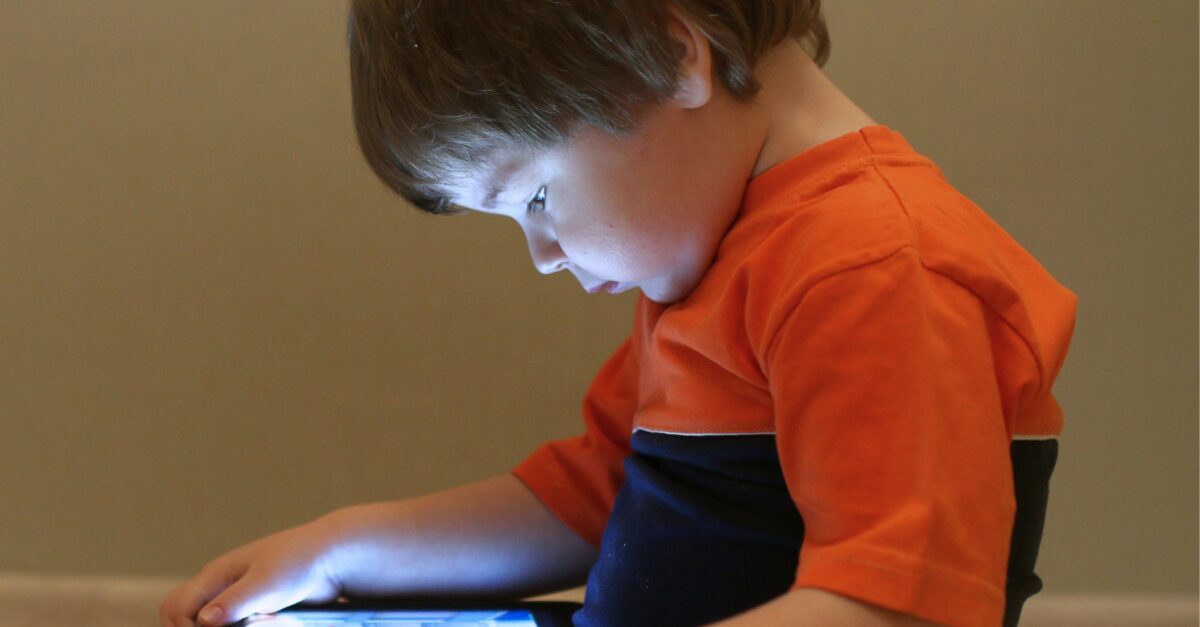We’re Told to Limit Kids’ Screen Time. But How Does It Truly Affect Their Health?

Dr Nick Fuller
Leading Obesity Expert at the University of Sydney and founder of Interval Weight Loss.

If you’re a parent, you’re probably familiar with one of the most talked-about debates in modern parenting: kids and screen time.
Screens can be a powerful tool. They can help children learn, spark creativity, and even support social connections with peers and family.
But too much screen time can come at a cost, not just to your child’s development, but also to their physical health.
So, how exactly does screen time affect your child’s physical wellbeing? And what can parents do to encourage a healthy balance with devices?
How Much Screen Time Is Safe?
In Australia, recommended screen time limits are part of the 24-hour movement guidelines. These guidelines outline how much time children should spend each day on physical activity, sleep, and screen-based activities to maintain overall health.
For seated screen use, the recommendations are:
- No screen time for children under two
- Up to one hour per day for kids aged two to five
- No more than two hours per day of recreational screen use for children aged five to 17 (outside of schoolwork)
Despite these guidelines, only 17% to 23% of Australian preschoolers and around 15% of 5-to-12-year-olds actually meet the recommended limits.
How Screen Time Influences Kids’ Diets and Health
Children who spend more time in front of screens are more prone to distracted eating. When they’re focused on a device, they can miss the signals from their bodies that tell them they’re full.
High screen use is also linked to cravings for less nutritious foods. Exposure to junk food advertising during kids’ shows and online content plays a significant role in shaping these food preferences.
Another, less obvious way screen time can affect diet is through sleep disruption. Recommended sleep for children and teens is:
- Toddlers: 11–14 hours, including naps
- Ages 3–5: 10–13 hours, including naps
- Ages 5–13: 9–11 hours
- Teenagers: 8–10 hours
Research indicates screen time can interfere with a child’s ability to get enough rest. A review of 67 studies found that in 90% of cases, higher screen use was linked to shorter or delayed sleep in school-aged children and adolescents.
Sleep is crucial for regulating ghrelin and leptin, two hormones that control hunger and appetite. Inadequate sleep disrupts these hormones, increasing the desire to eat.
It also encourages impulsive food choices, which often cause kids to reach for foods high in sugar, fat, and salt. When children don’t get enough sleep, they’re more likely to use their ‘pester power’ to secure sugary or salty snacks the following day.
Spending more time indoors with screens often means less time moving and being physically active. Australia’s guidelines suggest children get at least 60 minutes of moderate-to-vigorous activity each day, or for pre-schoolers, an hour of ‘energetic play’. This doesn’t need to be done all at once; several shorter sessions throughout the day are fine.
Excessive screen time often pairs with easy, packaged snacks, and before you know it, processed and discretionary foods dominate your child’s diet. To understand how convenience foods hide under the guise of ‘healthy’ and what to watch out for, check out Hooked on Convenience: How Processed Foods Are Hijacking Our Kids’ Health.
Practical Steps for Healthy Screen Habits
Fortunately, there are simple ways to help your child develop a balanced relationship with screens while ensuring enough sleep and daily activity.
Set clear screen rules
Create guidelines based on your child’s age, covering when, where, and how screens are used. Educational apps in the family room can be fine, but unrestricted YouTube in the bedroom is not. Make mealtimes and bedtime screen-free, and involve your child, especially teenagers, so they understand and follow the rules.
Encourage outdoor activity
Schedule regular outdoor play or sports, whether it’s daily park visits or weekend games. Being active daily supports better sleep and overall health. Let your child help choose activities to boost participation and enjoyment.
Lead by example
Children imitate their parents, so modelling healthy screen habits is key. Limit your own screen use, minimise distractions from notifications, and follow the same rules you set for them.
Create a sleep-friendly bedroom
Make your child’s bedroom a restful space. Keep it quiet, dark, and at a comfortable temperature (around 18–22°C). Remove toys and screens so the room is associated with sleep rather than play.
When you slice out distractions, basic health habits like drinking enough water still matter. Learn how to make hydration effortless in Quick Tips to Get Kids Drinking Water More Often.
Summing Up
Balancing screen time with physical activity and sleep is key to supporting your child’s health and development. Setting clear rules, encouraging outdoor play, modelling healthy habits, and creating a sleep-friendly environment can help your child build a positive relationship with screens while staying active and well-rested. Small, consistent steps make a big difference in fostering lifelong healthy habits.
Stay ahead with current tips, professional advice, exclusive savings, and priority support!
Meet Dr Nick Fuller
My Story
As a father, I know first-hand that raising healthy and happy children is tricky. Children are fussy, particularly at the end of the day when they are shattered. We also live in a society where companies seek to profit from what we feed our kids; incorrect and damaging advice is pushed on us and marketed towards our children, and we have no time.
But with these recipes and resources, you and your children can enjoy simple and well-founded food and lifestyle choices for lifelong health.

About Dr Nick Fuller
Dr Nick Fuller is the founder of Interval Weight Loss and is a leading obesity expert at the University of Sydney with a Ph.D. in Obesity Treatment. Dr Fuller is also the author of three best-selling books and his work been published in top ranked journals in the medical field, including JAMA, Lancet and American Journal of Clinical Nutrition.
